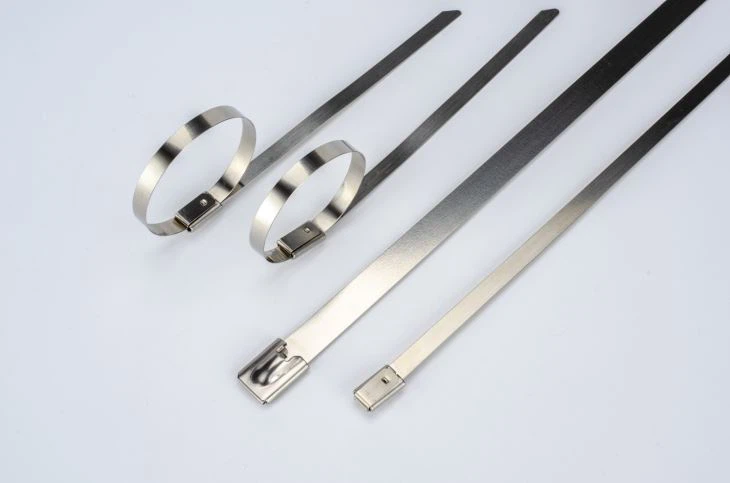Metal cable ties, particularly those made from stainless steel, offer a durable and versatile solution for securing cables and other items in challenging environments. This guide explores the proper techniques for selecting, installing, and tightening metal cable ties to ensure optimal performance and safety in various applications.

Selecting Metal Cable Ties
When choosing metal cable ties, consider the specific requirements of your application. Select ties with appropriate width and length to match the size and weight of the objects being secured, as wider ties generally offer greater tensile strength for heavier loads. Stainless steel ties are preferred for their exceptional durability, corrosion resistance, and ability to withstand extreme temperatures ranging from -80°C to +538°C. These robust fasteners can support loads of up to 160 kg, depending on their width, making them ideal for demanding industrial and outdoor environments.
Using Metal Cable Ties
To effectively use metal cable ties, particularly stainless steel ones, follow these steps for optimal installation and performance:
- Positioning: Begin by wrapping the tie around the bundle or object you wish to secure. Ensure the locking mechanism faces outward for easy access and manipulation.
- Initial manual tensioning: Thread the tail end of the tie through the locking head and pull it tight by hand. This preliminary tightening helps position the tie correctly and removes slack.
- Tool-assisted tensioning: For precise and secure fastening, use a specialized stainless steel cable tie gun. This tool allows you to apply consistent tension and automatically cuts the excess tail, leaving a clean finish without sharp edges.
- Tension adjustment: Most cable tie guns feature adjustable tension settings. Select the appropriate tension level based on the application requirements and the items being secured. Avoid over-tightening, which can damage delicate cables or components.
- Tail removal: After achieving the desired tension, the tie gun will automatically cut the excess tail. If using manual tools, carefully cut the protruding end with side-cutting pliers, leaving a small tail to prevent the tie from slipping through the locking mechanism.
- Safety considerations: Always wear appropriate personal protective equipment, such as gloves and safety glasses, when working with metal ties. The cut ends can be sharp, posing a risk of injury.
- Removal and replacement: To remove a metal tie, use specialized cutting tools designed for stainless steel. Never attempt to unlock or reuse a metal tie, as this compromises its integrity. Always replace with a new tie when adjustments are needed.
By following these steps, you can ensure that metal cable ties are used effectively and safely, maximizing their strength and durability in various applications, from industrial settings to outdoor environments where resistance to corrosion and extreme temperatures is crucial.
Advantages of Metal Ties
Metal ties offer significant advantages over their nylon counterparts, particularly in demanding environments. Their superior strength allows them to support much higher loads, making them ideal for heavy-duty applications in industrial settings. The self-locking mechanism ensures a secure fastening that resists tampering and accidental loosening. Additionally, stainless steel ties exhibit exceptional resistance to UV light, chemicals, and extreme temperatures, making them suitable for outdoor use and harsh industrial conditions where traditional plastic ties would quickly degrade. This durability not only enhances safety but also reduces the need for frequent replacements, potentially lowering long-term maintenance costs.
Maintenance and Storage Tips
Proper maintenance and storage are crucial for ensuring the longevity and effectiveness of metal cable ties. Store unused ties in a dry, cool environment away from direct sunlight and corrosive chemicals to prevent material degradation. When removing or adjusting ties, exercise caution to avoid injury from sharp edges that may result from cutting. For long-term installations, periodically inspect the ties for signs of wear or corrosion, especially in outdoor or harsh industrial settings. If replacement is necessary, carefully cut and remove the old tie before installing a new one, ensuring the replacement is of the same or higher strength rating to maintain the integrity of the fastening.


